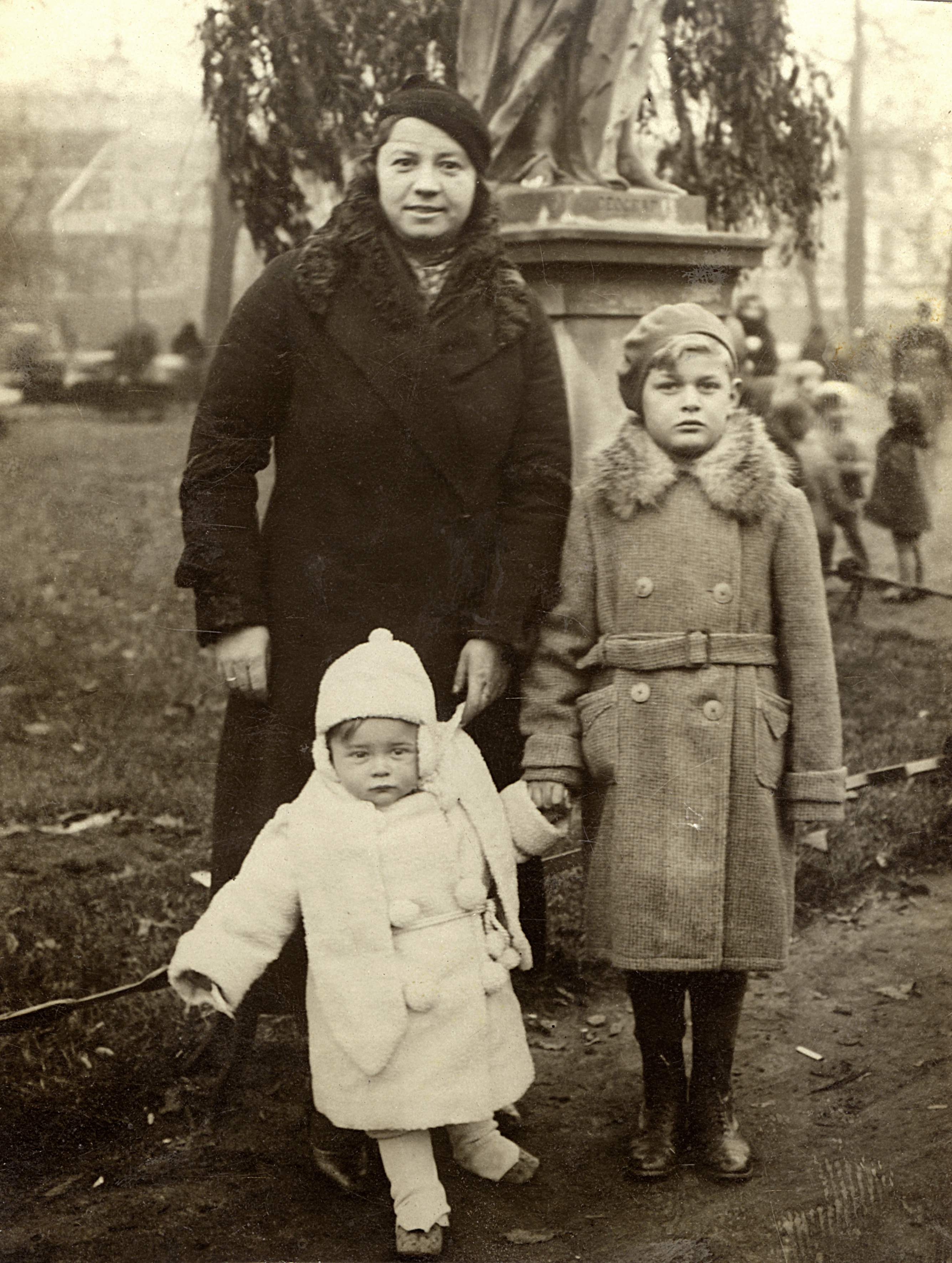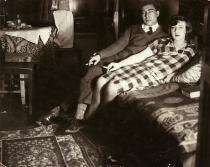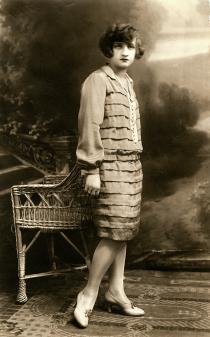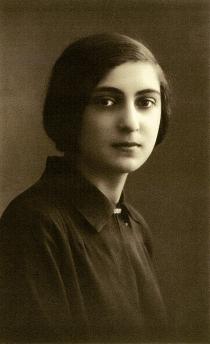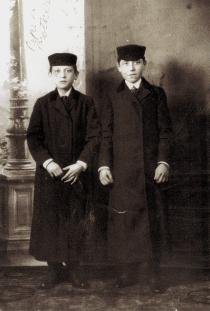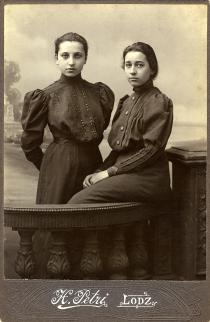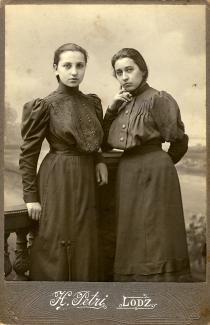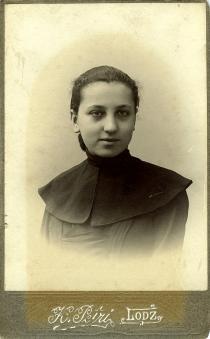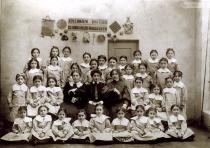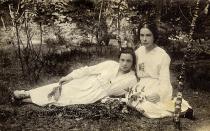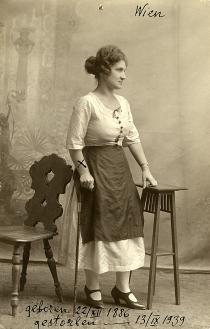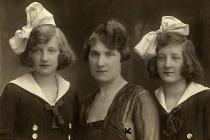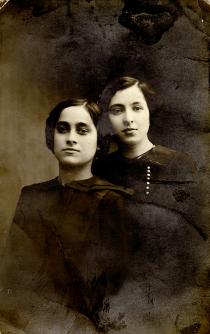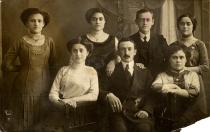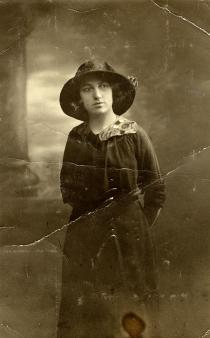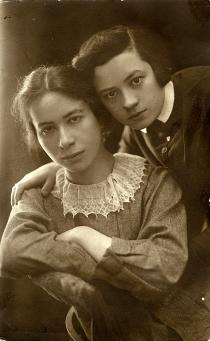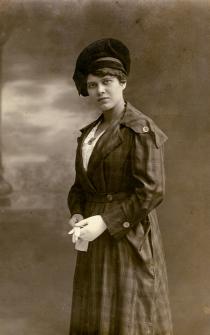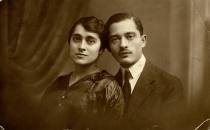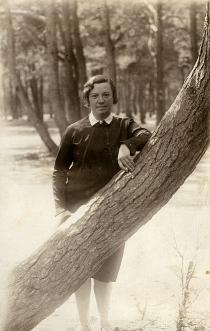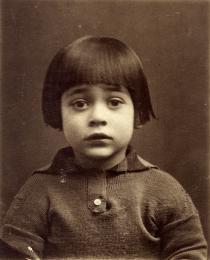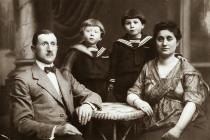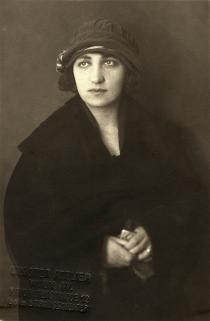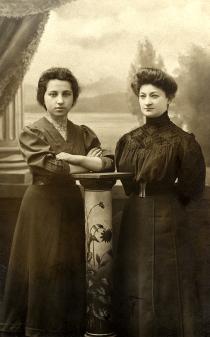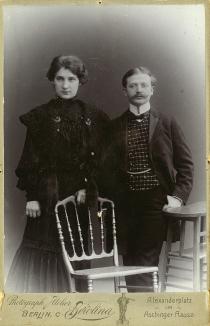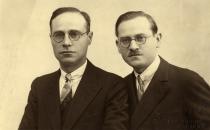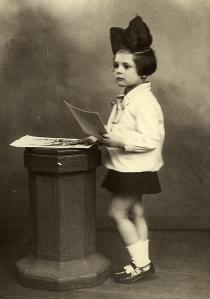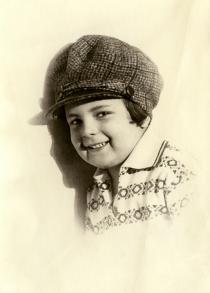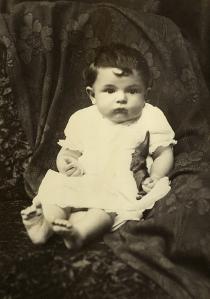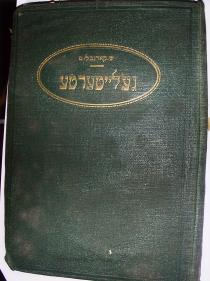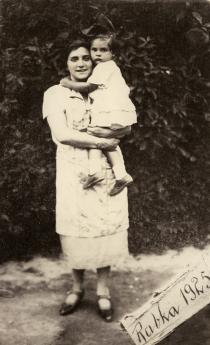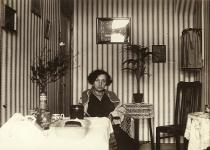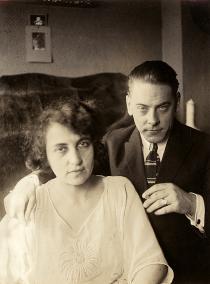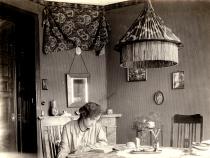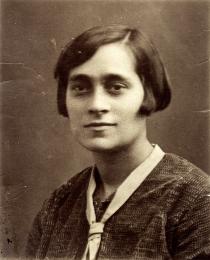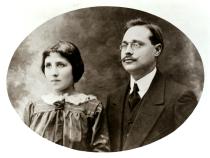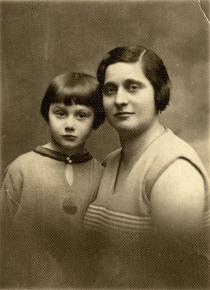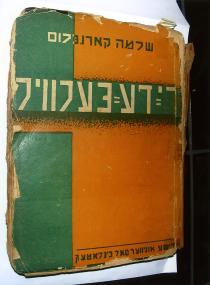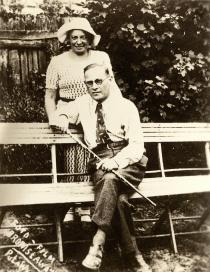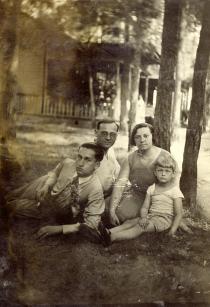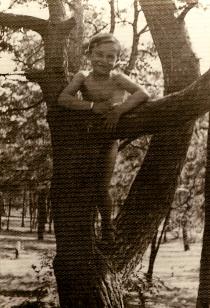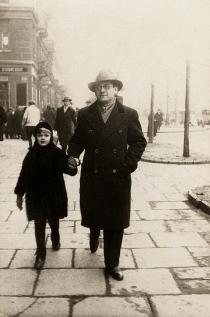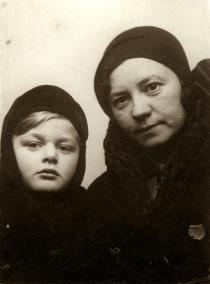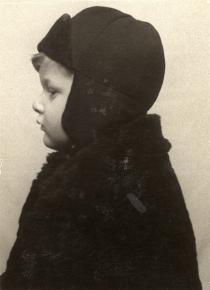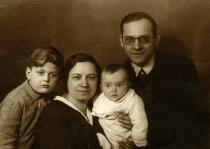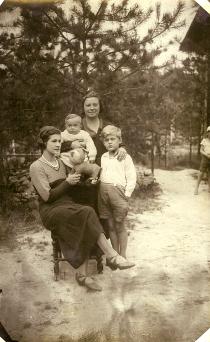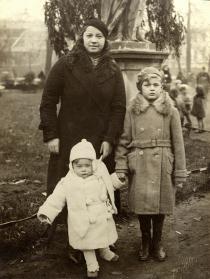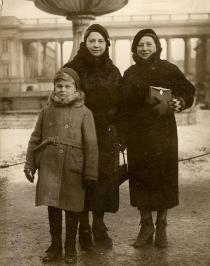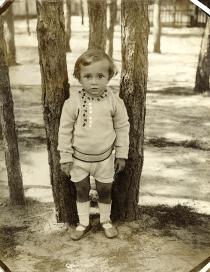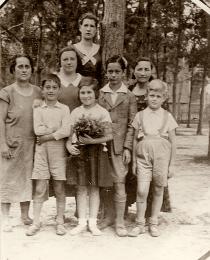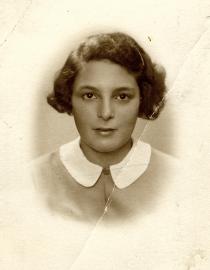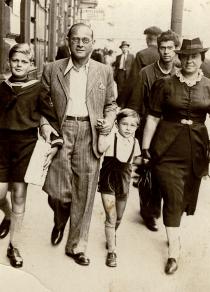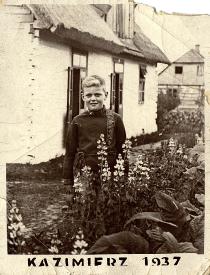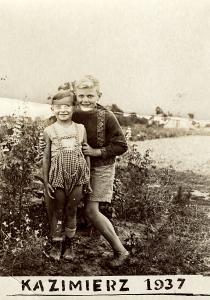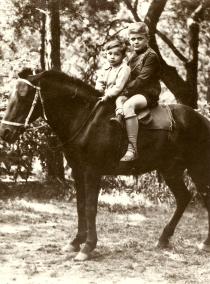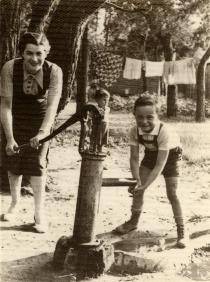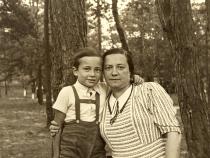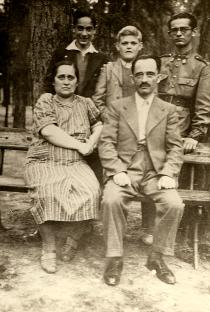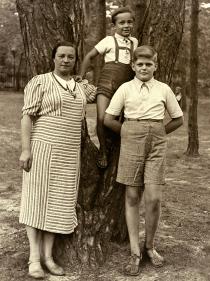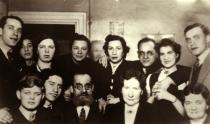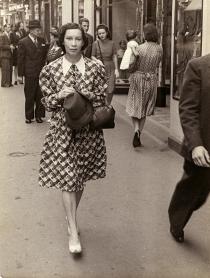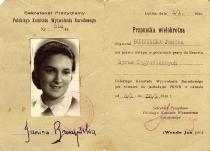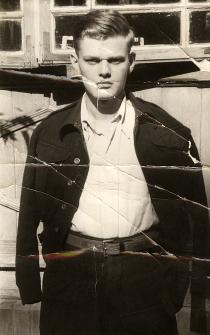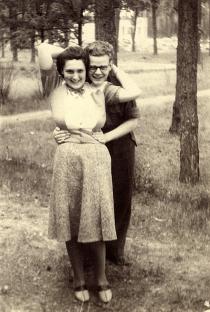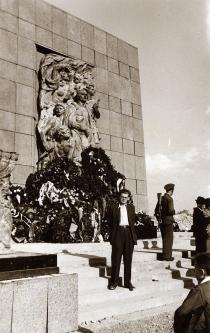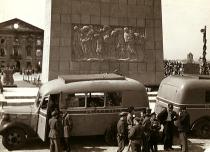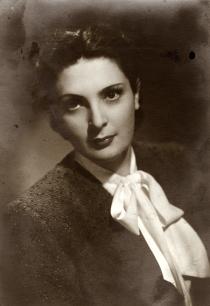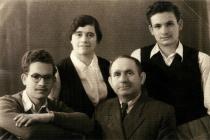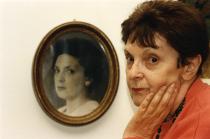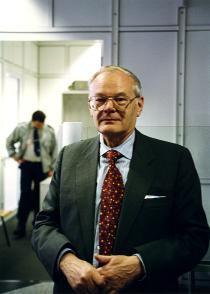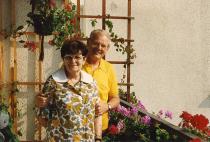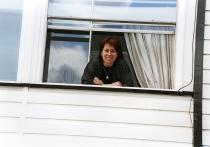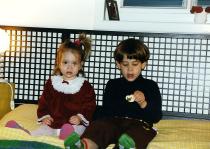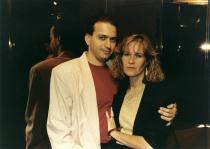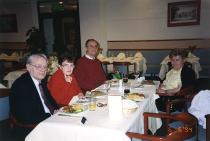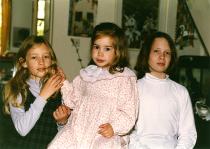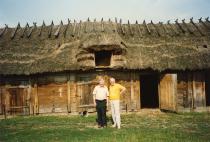This is me, Mom and Borus in Saski Garden, on 10th November 1933. You can see those sculptures from the Saski garden. There’s something written on the back side of the photo: in Yiddish: ‘Varshe, in gortn’, Warsaw, in the garden. Im wearing this fur collar and beret; people used to say -- ‘a girl’. I remember it even today.
My mom Lonia - Lea Kornblum - nee Mileband, was born in 1900. Dad got married to Lonia some time around 1929. I don't have information what school she went to, but she was a teacher before she got married, a home room teacher, and she may have also taught Polish at Korczak's, on Krochmalna Street. When I was little she didn't work, but later, when we weren't doing to well, she learnt how to make corsets, there were two additional sewing machines at home for Mother. I learnt how to sew and used to help Mom to sew bras, so called full ones, you had to put the cups in first. Later Mom realized it would be better for her to open her own store instead of providing bras to other stores. And she opened a store on Rymarska Street, in the other part of the store there was a dressmaker or a haberdasher. It could have been in 1936, didn't last long. We used to go there some time to visit Mom, My brother Borus was nuts about those visits.
I knew Lonia wasn't my mom, but I didn't feel it. Mom was a very smart woman. But from the time perspective, I realize I didn't experience true motherly love. I was a bit browbeaten, always very shy. I know that Mother's niece, Estusia, who stayed with us, used to pick on me a bit. And Dad would always get very upset about it, I remember. Once in a summer resort she made me a hardboiled or soft-boiled egg - not what I liked, another time in a row. When I protested, Dad got upset, he was drinking a glass of tea with milk. He didn't finish, threw the glass over the porch. Mom didn't say anything.
My brother Borus was born in 1932. Borus derives from Ber - Dov in Hebrew, which means a bear. Now he uses also his Polish name Wladek, or Wladzio - Wladyslaw. I remember when he was born Grandmother Gela was laid ill. In Jewish 'brist' means 'brisket' that's how we call meat: brist. And brit mila means circumcision, but here in Warsaw people used to call it brist mila. And Grandma asked me when I came to visit her: 'Vus makht di mame?', 'What is mom doing'?, 'Zi makht a brist', She's doing 'brist' - I answered, thinking about meat and everyone laughed in the whole family. I remember very well when Borus lay in the other room in a bed with a lifted front, with bars, so that he wouldn't fall out.
I remember that on Purim we used to visit the Aunts. Borus was quite small then, but I already had a deal in it. There is a custom that on Purim children used to get purimgelt Yiddish: money for Purim. And I remember Uncle Braunrot prepared for that holiday a roll of grosze and we got that. We had little flags, greger - a rattler, it's a little mechanism on a stick, like a flag, which, when span, it rattled. The more you spin it, the more it upsets Haman. There was also a spot for a candle at the very top.
I remember the Saski Garden, near the Unknown Soldier's grave, there were eleven arches, it was called 'eleven gates', and it took the entire stretch between the Saski Palace, which isn't there any more, and the buildings of the general headquarters. There are only three arches left out of that (I think). It was a well known architectural accent and we used to go there to [watch] changing of the guard. We used to go to the Saski garden often. It was nice in there, there was a Japanese house, which doesn't exist today, there was a garden, a railing around. And whenever we went to the Saski Garden, we had to jump on the wall where the railing was, hold Mom or Dad with one hand in order not to fall down, and walk like that the entire way. At the entrance, at the Pilsudski Square, right to the left, there was a huge café Sigalina where we used to go for kefir, and at the entrance they used to sell ice-cream Eskimos, on a stick. And there was a sundial, which is still there today, a temple of love, and a famous fountain, a pond that turned into a skating rink in the wintertime and we used to go there to skate. I wasn't good at skating.
